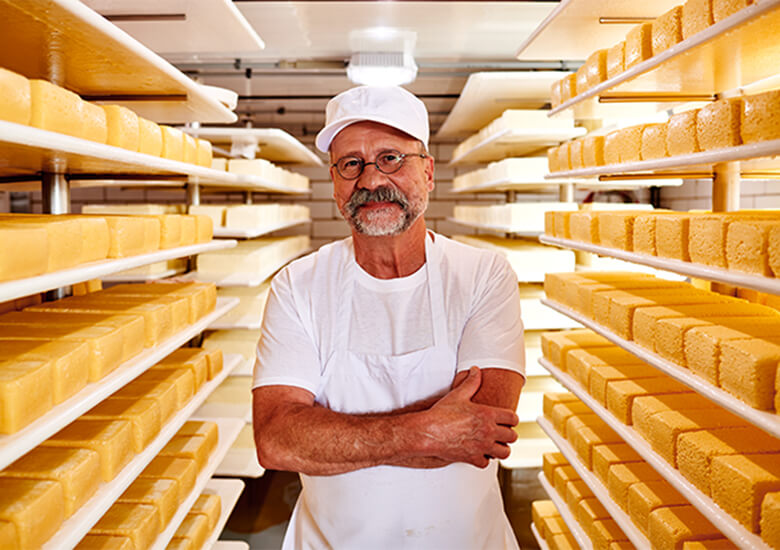Fulfill the Cheese Makers Melbourne Trusts: The Heritage of Floridia Cheese Thomastown
Fulfill the Cheese Makers Melbourne Trusts: The Heritage of Floridia Cheese Thomastown
Blog Article
Opening the Tricks of Artisanal Cheese Making: A Step-by-Step Do It Yourself Guide
In the world of culinary workmanship, artisanal cheese making stands as a testament to the fragile balance in between custom and innovation. Each action in the process, from picking the best milk to perfecting aging methods, holds within it a wealth of expertise passed down with generations. As we start this journey to debunk the art of producing exquisite cheeses, we are encountered with a tapestry of skills and tricks waiting to be deciphered. Join us as we check out the details of this old craft, where patience, art, and science converge to produce flavors that tantalize the senses.
Choosing the Right Milk
When embarking on the trip of artisanal cheese making, the option of milk plays a crucial duty in identifying the quality and attributes of the final item. The type of milk picked affects the taste, structure, and overall account of the cheese.
When selecting milk for cheese production, it is necessary to take into consideration the fat material. Greater fat content in milk can cause a creamier and richer cheese, while lower fat material may cause a drier and firmer structure. Additionally, the source of the milk, whether from cows, goats, lamb, or buffalo, contributes distinctive flavors and attributes to the cheese (Floridia Cheese Thomastown). Each kind of milk brings its own subtleties, allowing for a variety of cheese selections to be crafted based on the selected milk. Inevitably, the selection of milk is a basic choice that sets the structure for an effective artisanal cheese-making venture.
Culturing and Coagulating
To start the cheese-making process, the critical actions of culturing and coagulating must be thoroughly implemented to change milk right into curds and whey. Culturing entails introducing advantageous germs to the milk, which then begins the fermentation procedure. These germs transform lactose (milk sugar) right into lactic acid, developing the acidic setting essential for coagulation. The sort of society made use of can dramatically influence the taste, appearance, and ripening of the last cheese item.

The timing and temperature level control throughout culturing and coagulation are essential variables that influence the final outcome of celebrity. Appropriate implementation of these steps is crucial to guarantee the wanted appearance, flavor, and uniformity of the artisanal cheese being created.
Draining Pipes and Pressing Curds
After the milk proteins have coagulated and the curds have actually been cut to launch whey, the next crucial action in artisanal cheese making includes draining and pushing the curds to achieve the wanted structure and consistency of the final cheese product. Draining is the process of dividing the curds from the whey. This can be done by transferring the curds right into a cheesecloth-lined bowl-shaped sieve or mold and permitting the whey to drain off normally. The moment for draining can vary depending upon the sort of cheese being made and the preferred moisture web content.
Pressing assists remove any continuing to be whey and compacts the curds to create a strong cheese wheel. Correct pressing and draining pipes are important actions check that substantially impact the high quality and characteristics of the artisanal cheese being generated.
Aging and Flavoring Methods
Carrying out meticulous aging and flavoring techniques is crucial in enhancing the depth and intricacy of artisanal cheeses, elevating their preference accounts to exquisite levels of improvement and sophistication. Aging plays an important duty in establishing the one-of-a-kind tastes and appearances that differentiate artisanal cheeses. During the aging process, cheeses are saved in thoroughly regulated settings where aspects such as temperature, air movement, and moisture are manipulated to encourage the development of advantageous mold and mildews and bacteria. This regulated environment allows celebrity to mature gradually, creating complex aromas and rich flavors.
Flavoring techniques likewise contribute significantly to the final preference of artisanal cheeses. Cheesemakers might choose to present extra tastes by incorporating active ingredients such as natural herbs, spices, or also fruits into the cheese during the manufacturing process. Additionally, some cheeses are cleaned or massaged with numerous fluids, such as brine or alcohol, to boost their textures and tastes.
Covering and Storing Cheeses

Final Thought
In final thought, grasping the art of artisanal cheese making entails meticulously picking the best milk, complying with accurate culturing and coagulating procedures, draining and pushing curds successfully, and utilizing various aging and flavor strategies. Bear in mind to wrap and store your cheeses appropriately to make certain optimum taste and texture development.
Each type of milk brings its own nuances, enabling for a large array of cheese selections to be crafted based on the picked milk.After the milk healthy proteins have actually coagulated and the curds have actually been reduced to launch whey, the following crucial step in artisanal cheese making involves draining pipes and pushing the curds to attain the wanted appearance and uniformity of the last cheese item. The majority of cheeses should be covered in wax paper or cheese paper to permit them to take a breath while shielding them from drying out. For cheeses that require to proceed aging, such as bloomy skins or cleaned skins, ensure they are stored in an amazing atmosphere like a cheese cave or a refrigerator established to the ideal temperature level. By paying focus to the wrapping and storage of artisanal cheeses, cheese makers Visit This Link and fanatics can maintain the stability of these delicacies and fully enjoy their intricate flavors.
Report this page